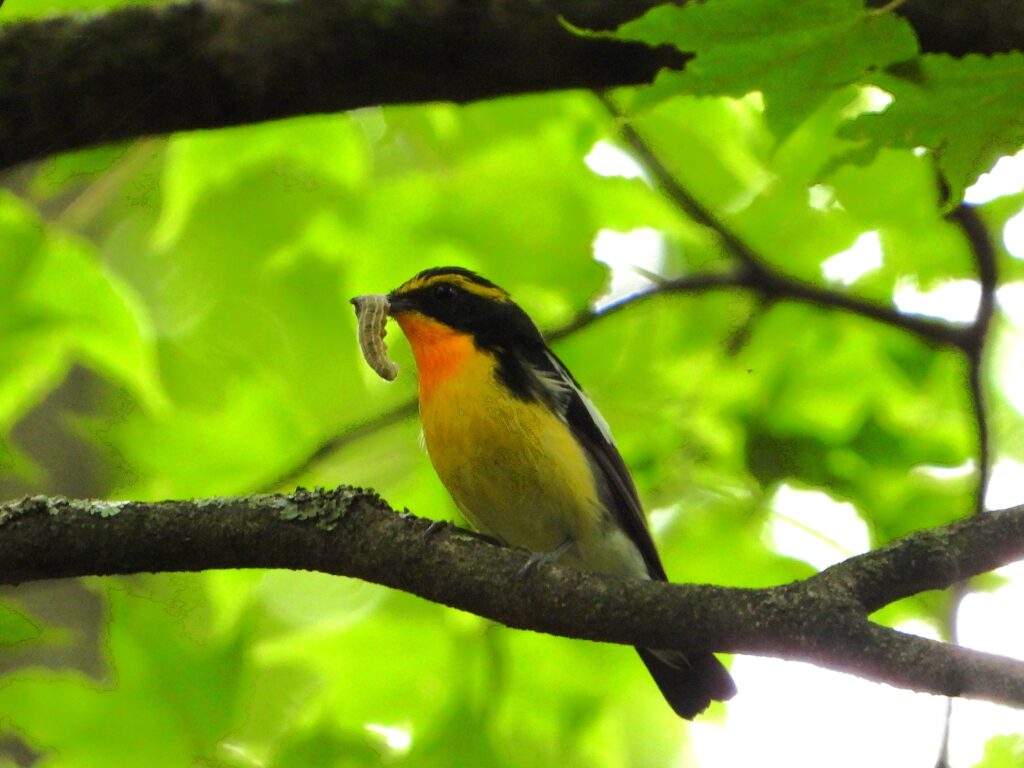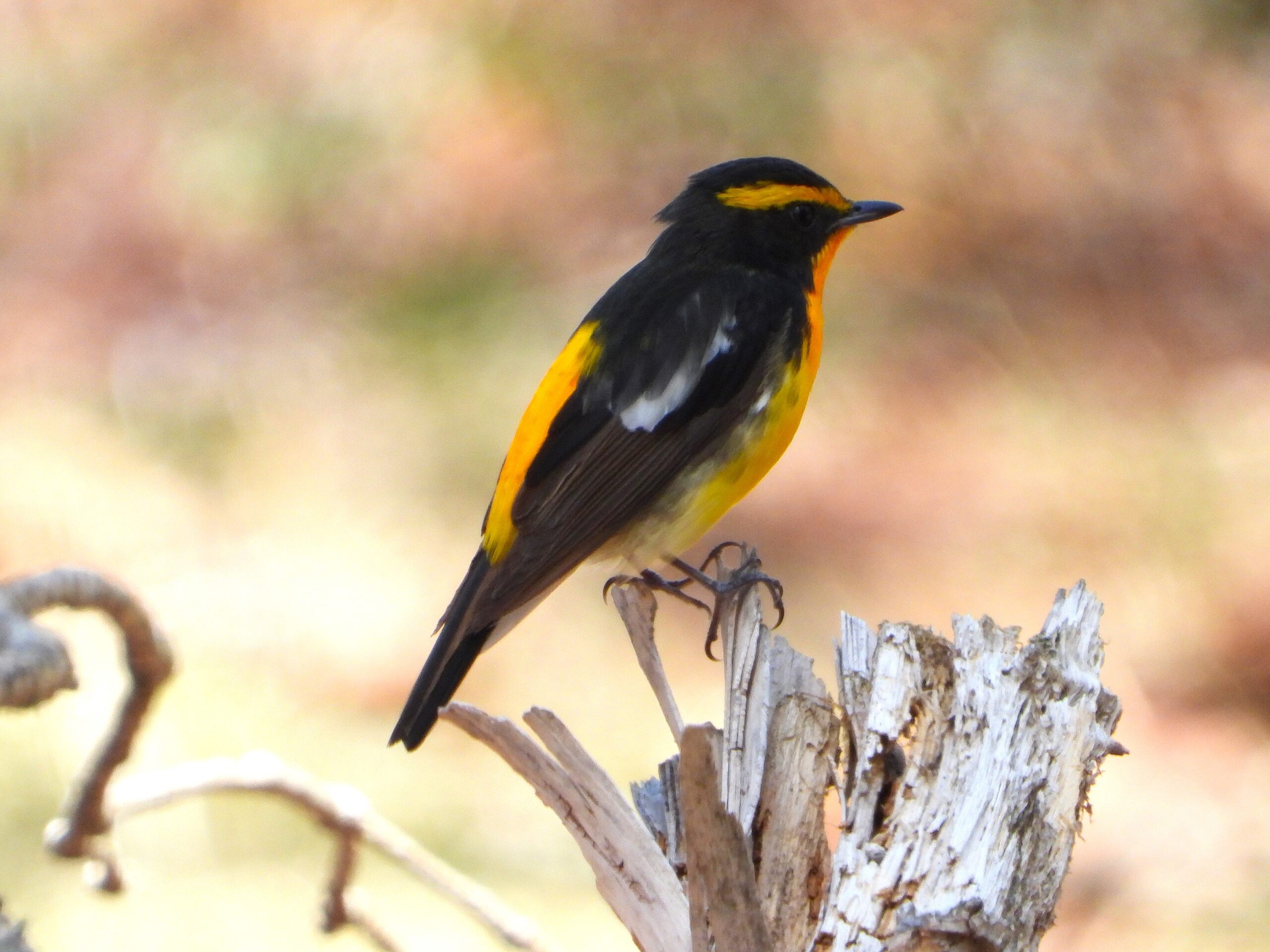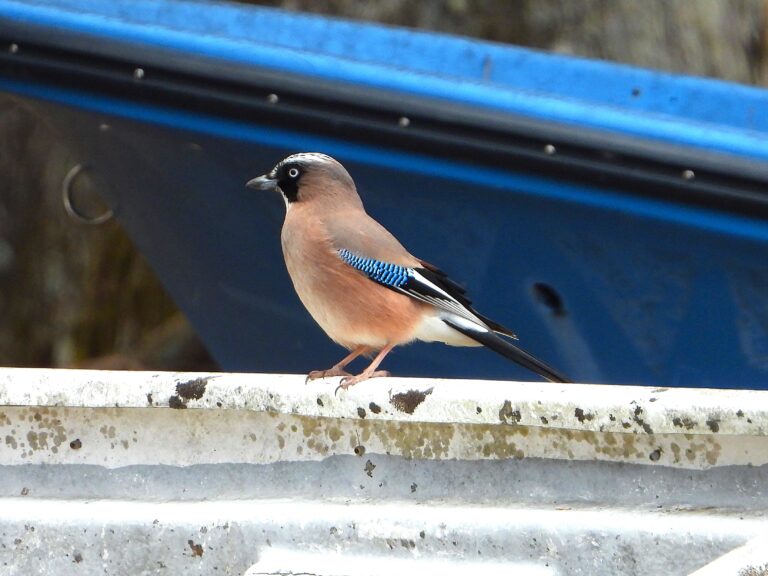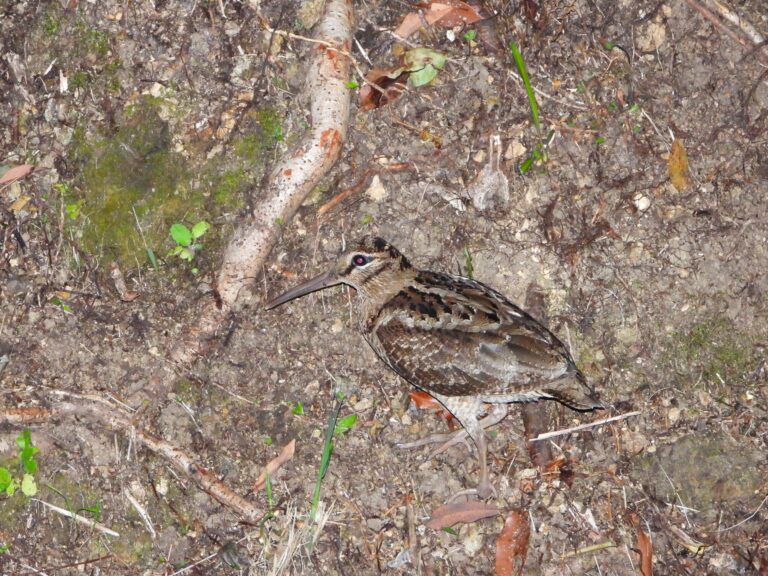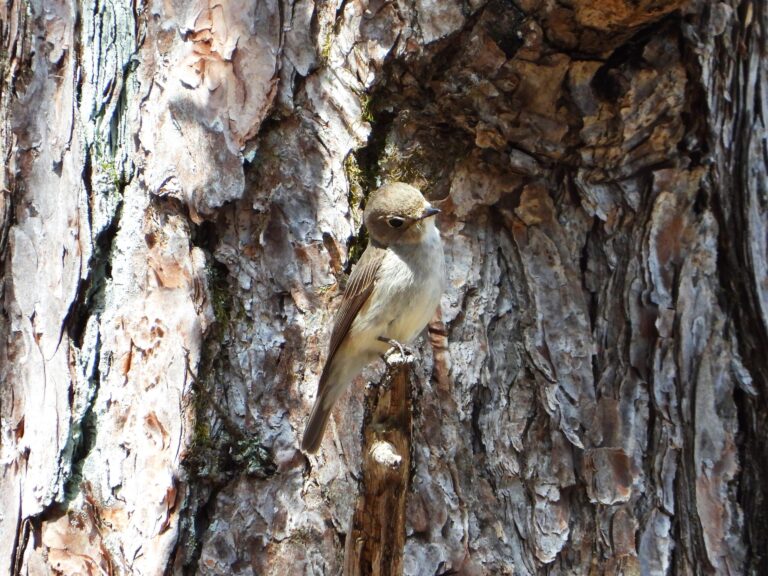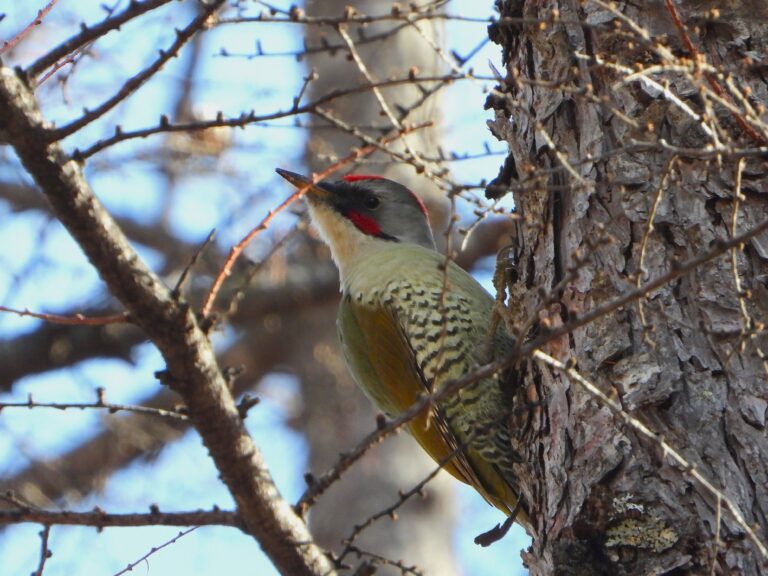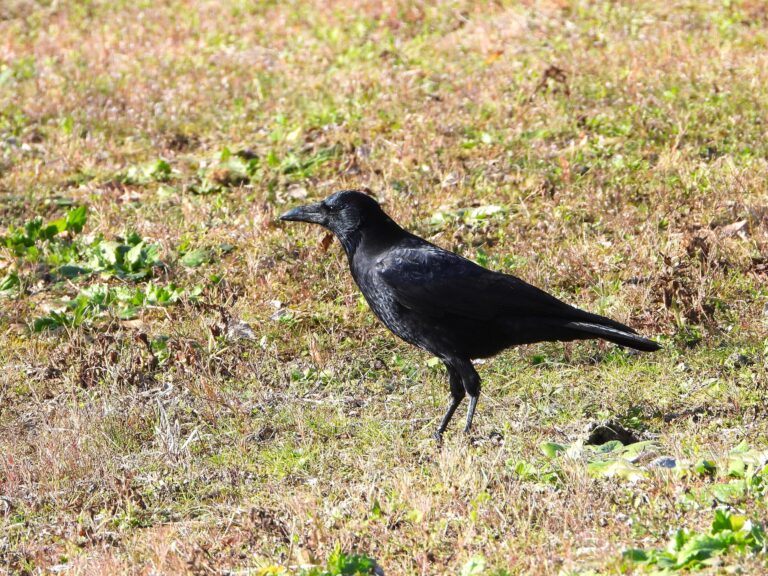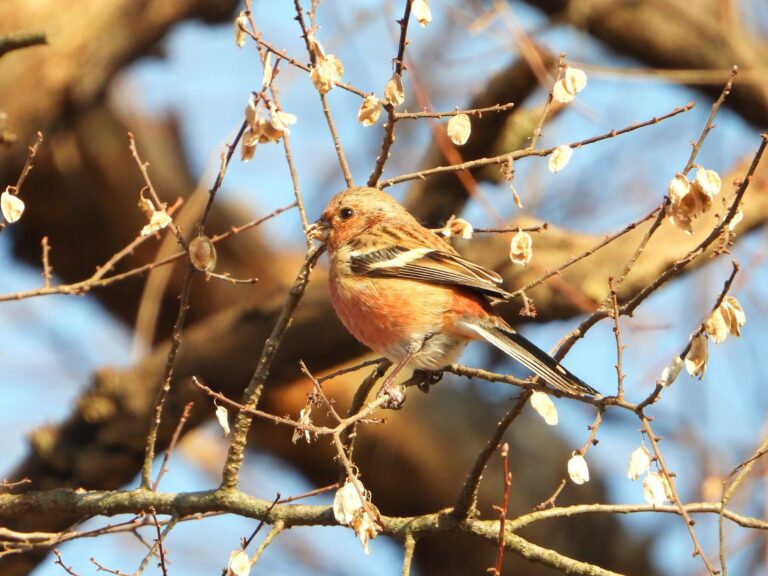Narcissus Flycatcher (Ficedula narcissina) – Wildlife of Japan
Introduction
The Narcissus Flycatcher, known in Japan as Kibitaki, is a summer migrant that arrives in spring to breed. It is celebrated for its clear, flute-like song and the striking yellow-and-black contrast of the male. This species breeds from Hokkaido to Kyushu in montane forests and migrates to Southeast Asia for the winter. Its English name is Narcissus Flycatcher and its scientific name is Ficedula narcissina.
Appearance
This is a small bird about 13–14 cm in length. Breeding males are striking, with a black head and back, a vivid yellow to orange throat and breast, and a distinct white wing patch. Females are olive-brown with pale underparts and a faint wing bar. Juveniles resemble females but show scaly patterns on the plumage.
Habitat
The species prefers deciduous broad-leaved forests, especially along streams and valleys. During the breeding season it is usually found in mountain woodlands, while in migration periods (April–May and September–October) it can also appear in lowland parks, temple groves, and wooded urban areas. It breeds widely across Japan, from Hokkaido to Kyushu, with only passage records in the Nansei Islands.
Where to Observation
The best time to observe the Narcissus Flycatcher is during spring migration, when males sing from treetops in montane forests. Early morning walks along forest streams often reveal their clear song before the bird itself comes into view. In the breeding season they remain in mountain forests, while after rain their singing activity becomes especially lively. During migration, they sometimes appear in urban parks or temple groves, surprising birdwatchers in unexpected places. In autumn they can be seen foraging closer to the ground or in low branches, providing additional opportunities for observation. Relying on their distinctive song is often the most reliable way to locate them.
Behavior
Males are strongly territorial in the breeding season and frequently sing from high perches. Feeding behavior is typical “flycatching”: they sally out from a branch to catch insects mid-air before returning to the same perch. When alarmed, they may flick their tails repeatedly.
Diet
They feed mainly on insects such as flies, bees, caterpillars, and beetles. During migration and in autumn they may also consume small fruits and berries.
Reproduction
Breeding occurs from May to July. Nests are placed in tree cavities, cracks, or at the base of roots, built with moss, fine roots, and animal hair. Clutch size is usually several eggs. Incubation is performed mostly by the female, while both parents feed the chicks after hatching. The young typically fledge in about two weeks.
Conservation
Globally the species is considered of Least Concern, though local populations may face threats from forest loss, habitat fragmentation, predation by invasive species, and window collisions. Conserving mature deciduous forests and maintaining green spaces during migration are important for its long-term stability.
Author’s Impression
The song of the Narcissus Flycatcher enlivens the forests of spring as leaves begin to unfold. At first the birds are difficult to spot, hidden high in the canopy, but following the sound until a flash of yellow appears among the branches is always an exciting moment. Photographing them can be tricky, as they often perch against bright backlight, but with morning sunlight at the right angle the contrast of black and yellow becomes truly stunning.
